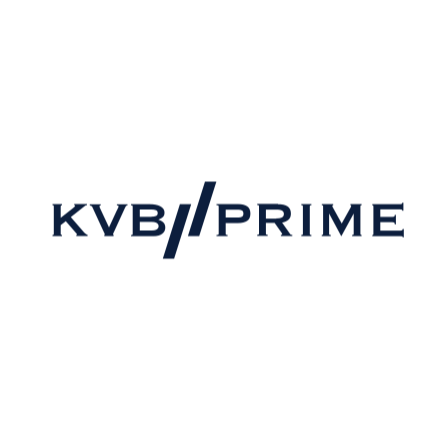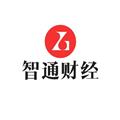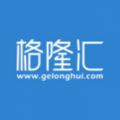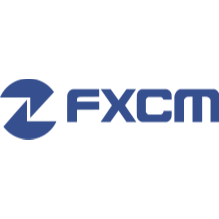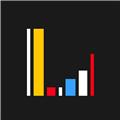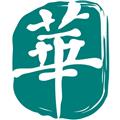不丹努爾特魯姆
不丹努爾特魯姆簡介
ISO 4217 Code:BTN
User(s):Bhutan
Inflation :3%
Source:The World Factbook, 2005 est.
Pegged with :Indian rupee at par
Subunit:1/100 chhertum (chetrum)
Symbol:Nu.
chhertum (chetrum):Ch.
Coins:
Freq. used:Ch.20, Ch.25, Ch.50, Nu.1.
Rarely used:Ch.5, Ch.10
Banknotes :Nu.1, Nu.5, Nu.10, Nu.20, Nu.50, Nu.100, Nu.500
Monetary authority:Royal Monetary Authority of Bhutan
Website:http://www.rma.org.bt
The history of the currency of the Bhutan
The first coins in Bhutan were introduced around the 1790’s which were bad imitations of the coins issued by the Cooch Bihar Kingdom. The Indian rupee has circulated in Bhutan since 1907 and it remains legal tender in Bhutan today. Bhutan first issued rupee coins in 1928 at par with the Indian rupee, and introduced the ngultrum in 1974 again at par with the Indian rupee. The ngultrum is divided into 100 chertrums. The ngultrum’s ISO 4217 code is BTN. Banknotes are currently issued by the Royal Monetary of Bhutan, who took over the responsibilities from the Royal Government of Bhutan in 1983.
At present coins circulate in denominations of 20, 25, 50 chertrum and 1 ngultrum. The 5 and 10 chertrum coins have been discontinued. Banknotes are issued in 5, 10, 20, 50, 100 and 500 ngultrum. The 1 and 2 ngultrum notes have been discontinued but remain legal tender.
The ngultrum (ISO 4217 code BTN) has been the currency of Bhutan since 1974. It is subdivided into 100 chhertum (called chetrums on coins until 1979). The ngultrum replaced the rupee at par.
The ngultrum is equal in value to the Indian rupee. As of January 7, 2005, there are 43.8400 ngultrums to the US dollar or 57.2443 to the euro.
India was key in assisting the Bhutanese government as it developed its economy in the early 1960s. When the ngultrum was introduced, it retained the peg to the Indian rupee which the Bhutanese rupee had maintained. The ngultrum does not exchange independently with other nation's currencies but is interchangeable with the Indian rupee.
Coins
5 chetrums, 1974-1975 (discontinued) 5 chhetrum, 1979 (discontinued) 10 chetrums, 1974-1975 (discontinued) 10 chhetrum, 1979 (discontinued) 20 chetrums, 1974 25 chetrums, 1974-1975 25 chhetrum, 1979 50 chhetrum, 1979 1 ngultrum, 1974-1979 不丹努爾特魯姆樣幣
Obverse Design: The Governmen crest on the left. Dungkar (conch) one of the eight lucky signs in the center. Portrait of His Majesty Jigme Singye Wangchuck on the right.
Reverse Design: Paro Rinpung Dzong
Obverse Design: The Government crest on the left. Khorlo ( Wheel of Dharma , one of the eight auspicious signs) in the center. Portrait of the third King His Majesty Jigme Dorji Wangchuck on the right.
Reverse Design: Punakha Dzong
Obverse Design: The Government crest on the left. Khorlo Wheel of Dharama, one of the eight auspicious signs in the center. Portrait of the third King His Majesty Jigme Dorji Wangchuck on the right.
Reverse Design: Trongsa Dzong with two mythical bird Bja Tshering (bird of long life) at both ends.
Obverse Design: Crossed Dorji (Dorji jardrum) watermark on the left.Norbu Rimpochhe, one of the seven auspicious gems in the center. Portrait of His Majesty Jigme Singye Wangchuck on the right.
Reverse Design: Tashichho Dzong with two dragons at top ends.
Obverse Design: Crossed Dorji (Dorji jardrum) watermark onthe left. Norbu Rimpochhe incircled by two Dragons, one of the seven auspicious gems in the center. Portrait of His Majesty Ugyen Wangchuck on the right.
Reverse Design: Punakha Dzong
不丹努爾特魯姆鑄幣
ISO 4217 Code:BTN
User(s):Bhutan
Inflation :3%
Source:The World Factbook, 2005 est.
Pegged with :Indian rupee at par
Subunit:1/100 chhertum (chetrum)
Symbol:Nu.
chhertum (chetrum):Ch.
Coins:
Freq. used:Ch.20, Ch.25, Ch.50, Nu.1.
Rarely used:Ch.5, Ch.10
Banknotes :Nu.1, Nu.5, Nu.10, Nu.20, Nu.50, Nu.100, Nu.500
Monetary authority:Royal Monetary Authority of Bhutan
Website:http://www.rma.org.bt
The history of the currency of the Bhutan
The first coins in Bhutan were introduced around the 1790’s which were bad imitations of the coins issued by the Cooch Bihar Kingdom. The Indian rupee has circulated in Bhutan since 1907 and it remains legal tender in Bhutan today. Bhutan first issued rupee coins in 1928 at par with the Indian rupee, and introduced the ngultrum in 1974 again at par with the Indian rupee. The ngultrum is divided into 100 chertrums. The ngultrum’s ISO 4217 code is BTN. Banknotes are currently issued by the Royal Monetary of Bhutan, who took over the responsibilities from the Royal Government of Bhutan in 1983.
At present coins circulate in denominations of 20, 25, 50 chertrum and 1 ngultrum. The 5 and 10 chertrum coins have been discontinued. Banknotes are issued in 5, 10, 20, 50, 100 and 500 ngultrum. The 1 and 2 ngultrum notes have been discontinued but remain legal tender.
The ngultrum (ISO 4217 code BTN) has been the currency of Bhutan since 1974. It is subdivided into 100 chhertum (called chetrums on coins until 1979). The ngultrum replaced the rupee at par.
The ngultrum is equal in value to the Indian rupee. As of January 7, 2005, there are 43.8400 ngultrums to the US dollar or 57.2443 to the euro.
India was key in assisting the Bhutanese government as it developed its economy in the early 1960s. When the ngultrum was introduced, it retained the peg to the Indian rupee which the Bhutanese rupee had maintained. The ngultrum does not exchange independently with other nation's currencies but is interchangeable with the Indian rupee.
Coins
5 chetrums, 1974-1975 (discontinued) 5 chhetrum, 1979 (discontinued) 10 chetrums, 1974-1975 (discontinued) 10 chhetrum, 1979 (discontinued) 20 chetrums, 1974 25 chetrums, 1974-1975 25 chhetrum, 1979 50 chhetrum, 1979 1 ngultrum, 1974-1979 不丹努爾特魯姆樣幣
Obverse Design: The Governmen crest on the left. Dungkar (conch) one of the eight lucky signs in the center. Portrait of His Majesty Jigme Singye Wangchuck on the right.
Reverse Design: Paro Rinpung Dzong
Obverse Design: The Government crest on the left. Khorlo ( Wheel of Dharma , one of the eight auspicious signs) in the center. Portrait of the third King His Majesty Jigme Dorji Wangchuck on the right.
Reverse Design: Punakha Dzong
Obverse Design: The Government crest on the left. Khorlo Wheel of Dharama, one of the eight auspicious signs in the center. Portrait of the third King His Majesty Jigme Dorji Wangchuck on the right.
Reverse Design: Trongsa Dzong with two mythical bird Bja Tshering (bird of long life) at both ends.
Obverse Design: Crossed Dorji (Dorji jardrum) watermark on the left.Norbu Rimpochhe, one of the seven auspicious gems in the center. Portrait of His Majesty Jigme Singye Wangchuck on the right.
Reverse Design: Tashichho Dzong with two dragons at top ends.
Obverse Design: Crossed Dorji (Dorji jardrum) watermark onthe left. Norbu Rimpochhe incircled by two Dragons, one of the seven auspicious gems in the center. Portrait of His Majesty Ugyen Wangchuck on the right.
Reverse Design: Punakha Dzong
不丹努爾特魯姆鑄幣
-
不丹努爾特魯姆鑄幣
熱門資訊更多
美元/新加坡元 當日內: 看漲。
04/18 18:24
KVB昆侖國際
新西蘭元/美元 當日內: 看漲,當 0.5908 爲支撐位,目標定在0.5964。
04/18 18:24
KVB昆侖國際
澳元/日元 當日內: 看漲,當 99.22 爲支撐位,目標定在100.11。
04/18 18:22
KVB昆侖國際
歐元/日元 當日內: 看漲,當 164.39 爲支撐位。
04/18 18:20
KVB昆侖國際
歐元/英鎊 當日內: 看跌,在 0.8567 之下。
04/18 18:20
KVB昆侖國際
EUR/NZD 當日內: 看跌,在 1.8038 之下。
04/18 18:20
KVB昆侖國際

